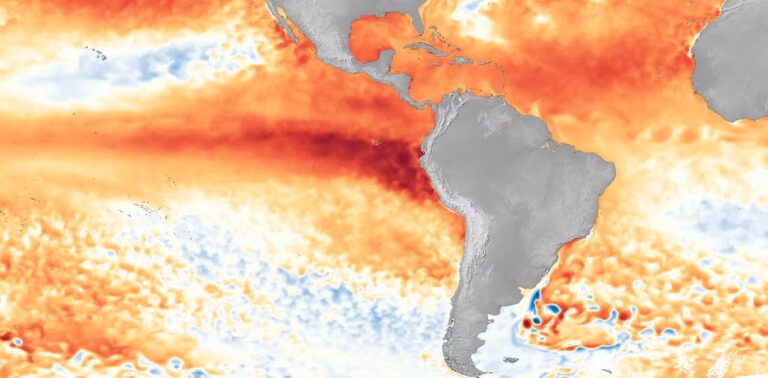Photo: The El Niño pattern stands out in the warm sea surface temperature anomalies in the Pacific in 2023. NOAA Climate.gov
Meteorologists anticipate a big impact in winter 2023, but the forecasts don’t all agree
Winter is still weeks away, but meteorologists are already talking about a snowy winter ahead in the southern Rockies and the Sierra Nevada. They anticipate more storms in the U.S. South and Northeast, and warmer, drier conditions across the already dry Pacific Northwest and the upper Midwest.
One phrase comes up repeatedly with these projections: a strong El Niño is coming.
It sounds ominous. But what does that actually mean? We asked Aaron Levine, an atmospheric scientist at the University of Washington whose research focuses on El Niño.
WHAT IS A STRONG EL NIÑO?
During a normal year, the warmest sea surface temperatures are in the western Pacific and the Indian Ocean, in what’s known as the Indo-Western Pacific warm pool.
But every few years, the trade winds that blow from east to west weaken, allowing that warm water to slosh eastward and pile up along the equator. The warm water causes the air above it to warm and rise, fueling precipitation in the central Pacific and shifting atmospheric circulation patterns across the basin.
This pattern is known as El Niño, and it can affect weather around the world.
A strong El Niño, in the most basic definition, occurs once the average sea surface temperature in the equatorial Pacific is at least 1.5 degrees Celsius (2.7 Fahrenheit) warmer than normal. It’s measured in an imaginary box along the equator, roughly south of Hawaii, known as the Nino 3.4 Index.
But El Niño is a coupled ocean-atmosphere phenomenon, and the atmosphere also plays a crucial role.
What has been surprising about this year’s El Niño – and still is – is that […]
Full article: mavensnotebook.com

